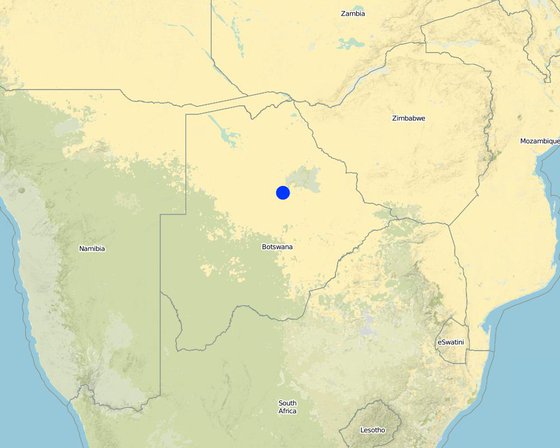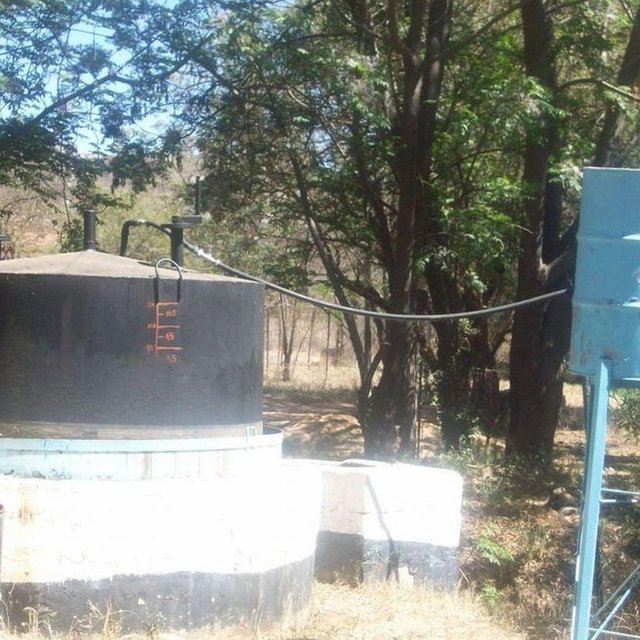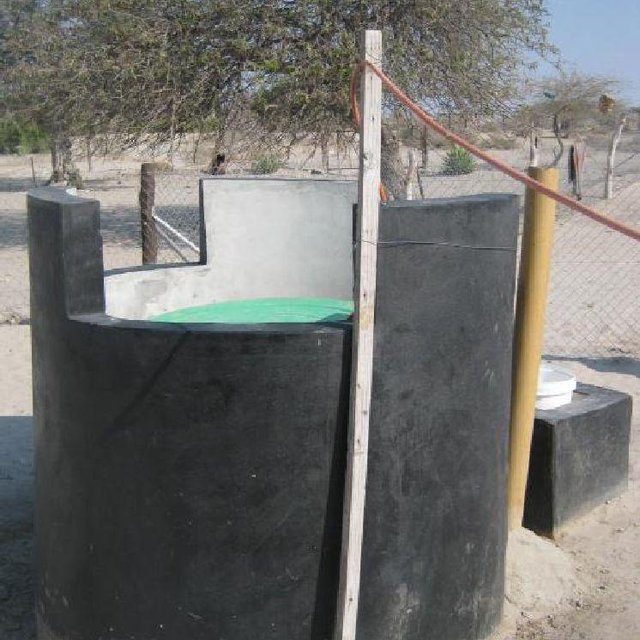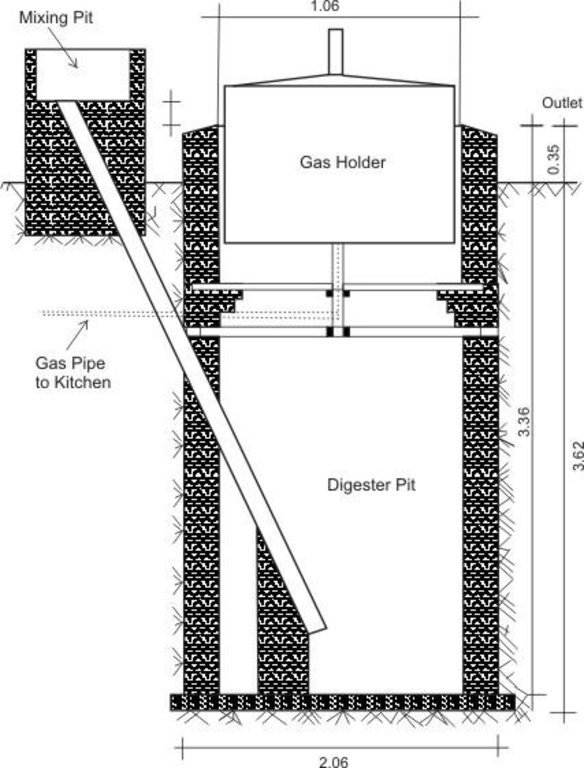



Biogas plant: The biogas plant can be constructed in several ways as long as it can provide a medium for the biological material be digested. Biogas is the name given to the gas that is produced during the decomposition of some organic waste specifically to produce methane gas. The gas is then captured in a storage tank (on site) to be used for household energy needs. In many parts of the world where this technology is used (including Botswana) the most common form of input material is cow dung making it more appropriate for rural environments.
Purpose of the Technology: Advantages: the technology offers two major advantages; first, at every level of use i.e. individual or institutional, savings in terms of energy is realized. The only costs that are borne are at installation, otherwise input of cow dung has a minimal cost of collection (if any at all). The second advantage is that there is reduced usage of fuel wood which translates into less cutting down of trees leading to reduced deforestation and degradation of land. A disadvantage is the initial investment which is significant for poor farmers.
Establishment / maintenance activities and inputs: Construction of the biogas plant: construction of the plant consists of three main chambers: namely, the Digester pit where all the microbiological reactions or decomposition of the material takes place. The digester has to be built to be air-tight with the released gas only escaping into the gas holder. The gas holder is connected to the digester by way of a pipe. Its main purpose is to collect all the gas that has been fermented. The mixing pit is the input chamber where the dung is mixed with water and fed into the digester. The amount and quality of water required for this is no constraint, even in this water stressed area. Construction the biogas plant has to be done according to specifications. A technical drawing of the plant is shown on page 3. The purpose of the technology is to use it for house-hold energy (for cooking, lighting and running appliances).
Natural / human environment: In Botswana the technology was introduced by the Rural Industries Innovation Center which is a government funded research institution. Despite the existence of this company for many years, the uptake has been very low due to poor marketing and extension services and lack of financial assistance to poor farmers.
Biogas is suitable either for a farm, cattle post or rural setting where the inputs (cow dung) are easily available. But there are possibilities of experimenting with other bio-degradable materials in major centres where cow dung is not readily available.

สถานที่: Kanye village, Southern District, บอตสวานา
ตำนวนการวิเคราะห์เทคโนโลยี:
การเผยแพร่ของเทคโนโลยี: ใช้ ณ จุดที่เฉพาะเจาะจงหรือเน้นไปยังบริเวณพื้นที่ขนาดเล็ก
In a permanently protected area?:
วันที่ในการดำเนินการ: 10-50 ปี
ประเภทของการแนะนำ








| ปัจจัยนำเข้า | หน่วย | ปริมาณ | ค่าใช้จ่ายต่อหน่วย (Pula) | ค่าใช้จ่ายทั้งหมดต่อปัจจัยนำเข้า (Pula) | %ของค่าใช้จ่ายที่ก่อให้เกิดขึ้นโดยผู้ใช้ที่ดิน |
| แรงงาน | |||||
| Labour | Tank | 1.0 | 198.0 | 198.0 | 100.0 |
| อุปกรณ์ | |||||
| Tank | Tank | 1.0 | 615.0 | 615.0 | 100.0 |
| Bricks | Tank | 1.0 | 77.0 | 77.0 | 100.0 |
| Cement | Tank | 1.0 | 123.0 | 123.0 | 100.0 |
| Plumbing material | Tank | 1.0 | 154.0 | 154.0 | 100.0 |
| วัสดุสำหรับก่อสร้าง | |||||
| Earth | Tank | 1.0 | 31.0 | 31.0 | 100.0 |
| ค่าใช้จ่ายทั้งหมดของการจัดตั้งเทคโนโลยี | 1'198.0 | ||||
| Total costs for establishment of the Technology in USD | 184.31 | ||||
| ปัจจัยนำเข้า | หน่วย | ปริมาณ | ค่าใช้จ่ายต่อหน่วย (Pula) | ค่าใช้จ่ายทั้งหมดต่อปัจจัยนำเข้า (Pula) | %ของค่าใช้จ่ายที่ก่อให้เกิดขึ้นโดยผู้ใช้ที่ดิน |
| อุปกรณ์ | |||||
| Cow dung | Tank | 1.0 | 33.0 | 33.0 | 100.0 |
| ค่าใช้จ่ายทั้งหมดของการบำรุงรักษาสภาพเทคโนโลยี | 33.0 | ||||
| Total costs for maintenance of the Technology in USD | 5.08 | ||||
Assuming large scale removal of dung, there could be reduction in animal manure available for crop production
As farmers would have to purchase fertilizer as animal manure becomes scarce
With biogas no labour for fuelwood collection. Time and effort previously used for firewood collection is freed
Future conflict over fuelwood resources would be averted. In case of no ownership of cattle.
Less demand on the time and labour of women and the girl child who are the main collecters of fuelwood
Where taboos exist for women harvesting dung from kraals (livestock enclosure); this could constrain adoption along gender lines
Provides cheaper and alternative source of energy. Reduces workload for fuelwood collection for women and the girl child.
Due to reduced plant cover
More trees certaily provides soil cover. But problems possible when plant cover is reduced as a result of less manure
Reduced soil fertility with distance from water points/kraals
Due to redused animal manure
Trees would have more density or cover
Wood collectors target specific species
Large scale adoption of biogas production may introduce air pollution. Also unpleasent smell around the village.
Cow dung will be reduce around water points and kraals